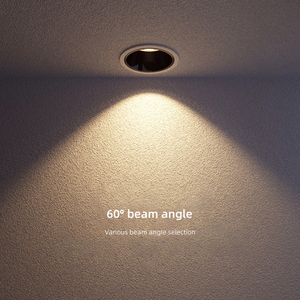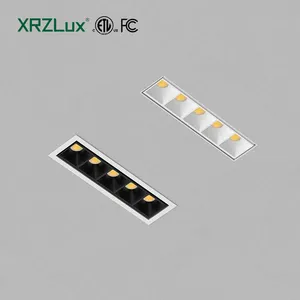Understanding Light Bulbs Recessed Fixtures
Light bulbs recessed fixtures are a hallmark of modern interior lighting design, prized for their ability to blend into the architectural elements of a space while providing effective illumination. These fixtures are installed flush against the ceiling, offering a sleek, unobtrusive look that can enhance any room's aesthetic. They are particularly popular in both residential and commercial environments for their versatility and performance.
Types of Light Bulbs Recessed Fixtures
Recessed fixtures come in various types, each designed for specific lighting needs and atmospheres. Understanding these types will help you choose the right fixture for your space:
- Standard Recessed Lighting: Commonly used to provide general ambient lighting.
- Directional Recessed Lights: Adjustable fixtures that allow you to focus light on specific areas, ideal for highlighting artwork or architectural features.
- LED Recessed Lights: Energy-efficient options that offer longer lifespans and lower energy consumption compared to traditional bulbs.
- Low-Voltage Recessed Lights: Utilizes lower electricity levels, offering a softer light that's perfect for creating a warm, inviting atmosphere.
Features of Light Bulbs Recessed Fixtures
Integrating light bulbs recessed fixtures into your lighting scheme brings numerous features that enhance both form and function. Key features include:
- Energy Efficiency: Many recessed fixtures are compatible with LED bulbs, reducing energy costs and environmental impact.
- Customizability: Available in a range of styles, sizes, and lumens, allowing for complete personal customization.
- Ease of Installation: Many models are designed for simple installation, often accommodating existing ceiling structures.
- Variety of Lens Options: Choose from clear, frosted, or colored lenses to achieve diverse lighting effects.
Applications of Light Bulbs Recessed Fixtures
The applications for light bulbs recessed fixtures are extensive, making them an excellent choice for various environments. Here are some of the most common usages:
- Residential Spaces: Perfect for living rooms, kitchens, bathrooms, and hallways where seamless lighting design is desired.
- Commercial Settings: Ideal for offices, retail spaces, and galleries, offering bright, focused lighting that enhances productivity and showcases products.
- Architectural Illumination: Used to accentuate architectural features both indoors and outdoors, providing depth and character to a space.
- Special Events: Suitable for temporary setups such as exhibitions or showcases, with adjustable fixtures providing dynamic lighting scenarios.
Advantages of Light Bulbs Recessed Fixtures
Choosing light bulbs recessed fixtures offers multiple benefits that contribute to efficiency, aesthetics, and comfort. The main advantages include:
- Space-Saving: Their flush design prevents clutter, making small rooms appear larger and more open.
- Modern Appeal: They provide a contemporary look that complements various interior styles while enhancing the overall visual appeal.
- Improved Functionality: With the ability to direct light, recessed fixtures enhance visibility and create well-lit areas that cater to various activities.
- Reduced Glare: These fixtures often minimize glare compared to traditional surface-mounted lights, making them comfortable for eye use.
















































